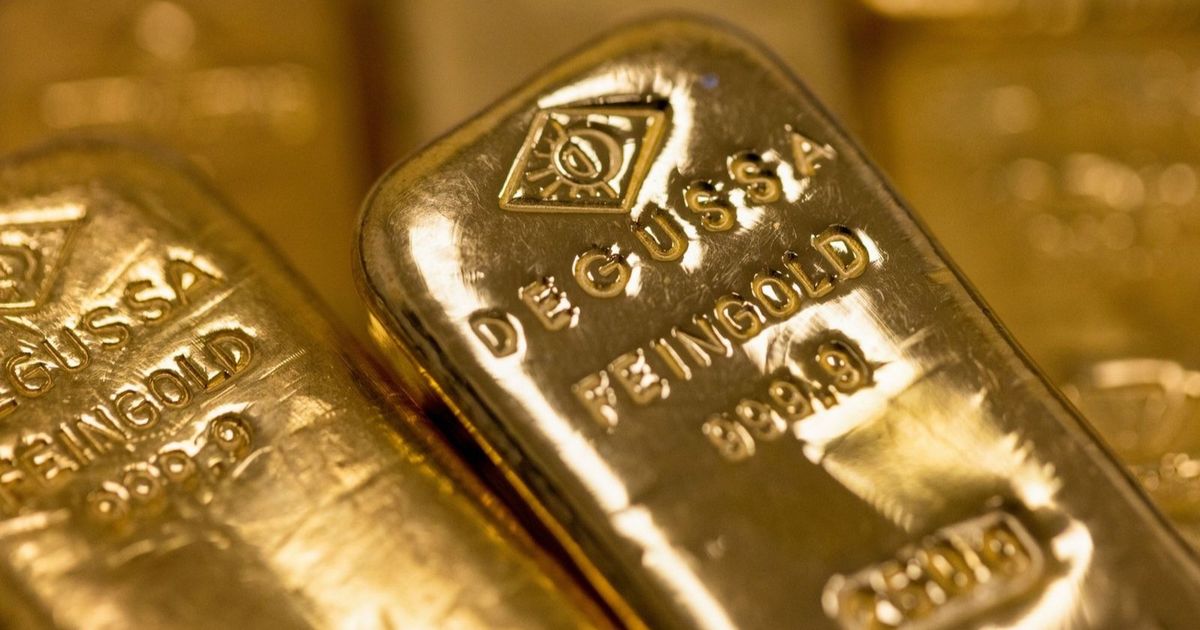The price of gold posted its biggest daily drop in 12 years, while silver suffered its biggest drop since February 2021 on Tuesday, amid a broad wave of selling in the markets after a weeks-long rally that pushed the precious metals to record levels. The price of gold fell 6.3% to $4,082.03 an ounce, while spot silver fell 8.7% to $47.89 an ounce. A combination of simultaneous factors caused the precious metal’s prices to fall, including positive trade talks between China and the United States, a strong dollar, technical indicators reaching levels indicating purchasing power pressure, uncertainty about investment positions due to the government shutdown and the end of the monsoon buying wave in India. Safe haven demand has eased relatively as US President Donald Trump and his Chinese counterpart Xi Jinping prepare to hold a meeting next week to resolve trade disputes between the two countries, in addition to the end of the seasonal buying season in India. Technical indicators, including the relative strength index, indicate that the strong bull run that began in August may have reached high overbought levels. The rise of the dollar since the beginning of the week has also led to an increase in the cost of precious metals for most buyers. Gold’s bullish wave faces a test of resilience. Ole Hansen, commodity strategist at Saxo Bank, said: “During the past few sessions, traders have started to flounder, with increasing fears of a correction or a phase of sideways movement,” adding: “In periods of correction, it becomes clear how strong the real market is, and this time will be no different, as latent demand is likely to lead to a cap.” “of any significant decrease.” Investing amid the absence of data In light of the ongoing government shutdown in the United States, commodity traders have been deprived of one of their most important tools, which is the weekly report issued by the US Commodity Futures Trading Commission (CFTC), which shows the positions of hedge funds and money managers in gold and silver futures contracts. In the absence of this data, speculators may be more inclined to build excessive positions in one direction or another. Hansen added: “The absence of position data comes at a critical time, with the possibility of a build-up of speculative buying positions in both metals, making them more vulnerable to a correction.” Deutsche Bank: Central banks can hold large amounts of gold and Bitcoin at this time. Fluctuations in the prices of precious metals have risen sharply in recent days, as traders try to hedge against any possible decline in other sectors of their investment portfolios, or to profit from falling prices. The number of traded options contracts linked to the world’s largest gold-backed ETF exceeded two million contracts last Thursday and Friday, surpassing the previous record. Bloomberg Economics expert opinion: “Index holdings of gold have not yet reached the record levels recorded in previous periods, and rising waves often extend for longer periods. But history shows that momentum eventually fades, and buying turns into selling. If late data shows a stronger-than-expected US economy, gold could post a bigger decline.” -Tatiana Daria, macroeconomic analyst. Silver falls after a historic rise. The price of silver also fell after rising about 80% since the start of the year, driven by macroeconomic factors similar to those supporting gold, in addition to a historic deficit on the London Stock Exchange. Benchmark prices outperformed New York futures, prompting traders to send the metal to the British capital to ease supply shortages. Silver warehouses linked to the Shanghai Futures Exchange also saw their biggest daily outflows since February, while stocks in New York also fell. The price of gold fell 5.3% to $4,126.94 an ounce by 11:36 a.m. in New York, while silver fell 7.1% to $48.73 an ounce.
Sharp losses hit gold and silver after a historic rally
